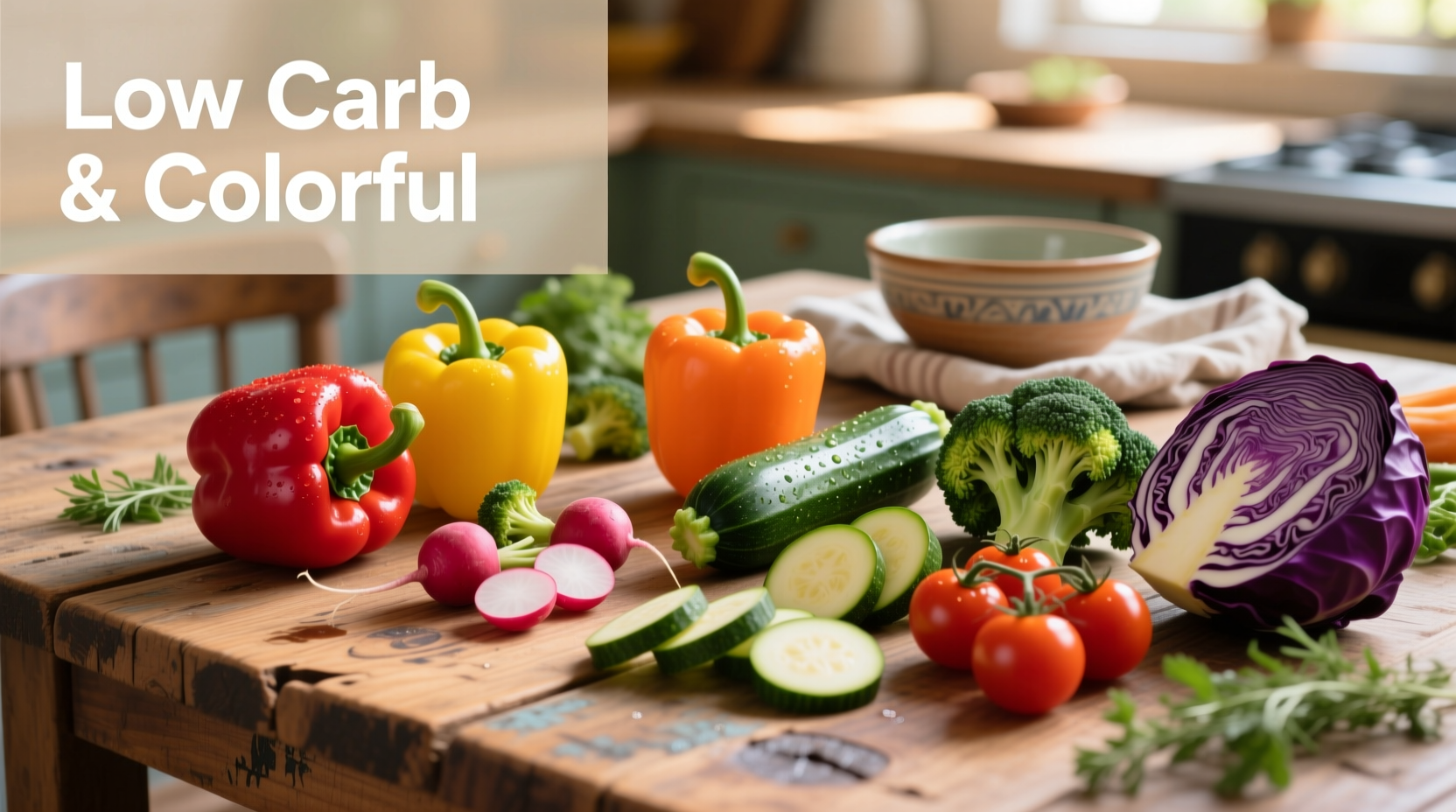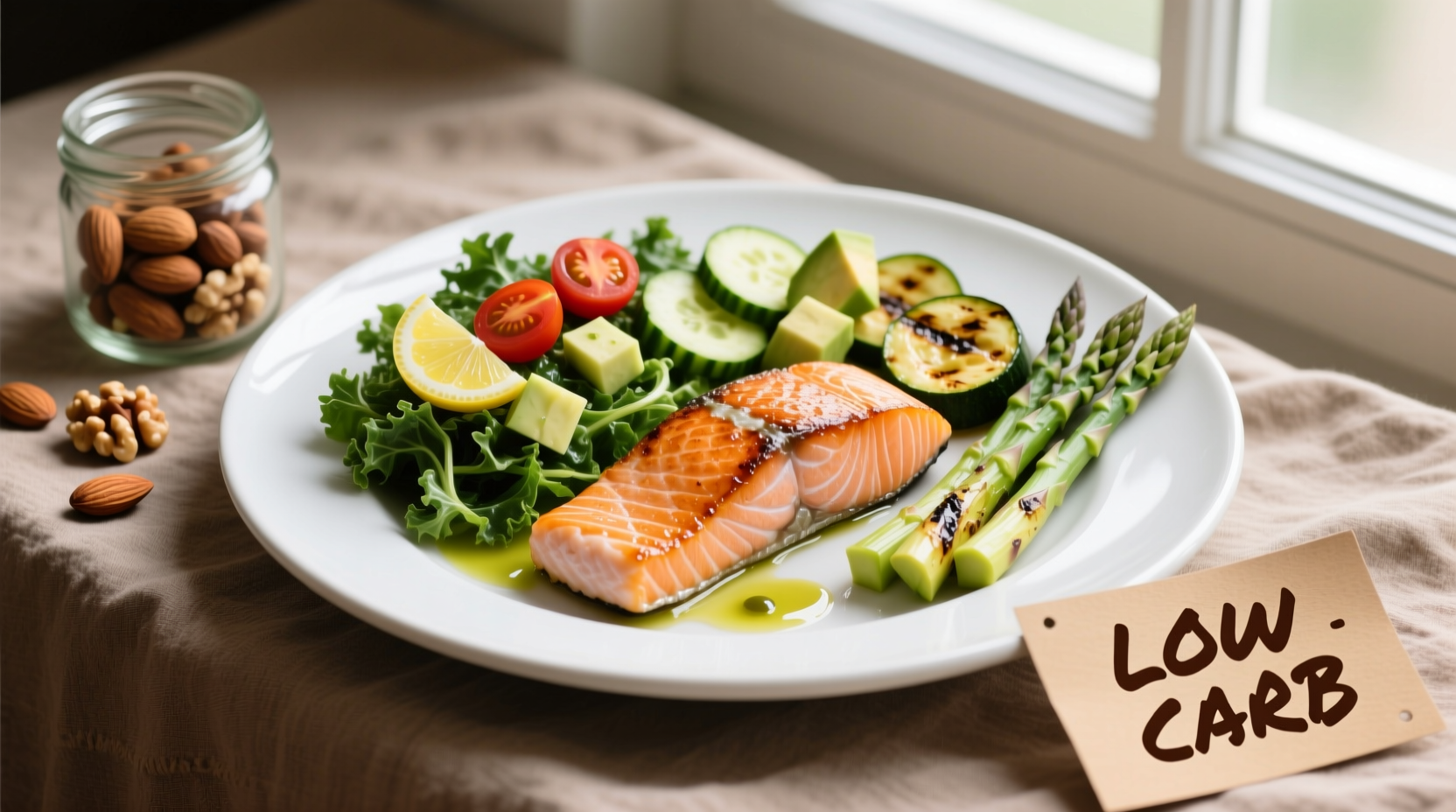Understanding Low Carb Foods: Beyond the Hype
When starting a low carb journey, knowing exactly what qualifies as low carb food prevents common pitfalls. Many products market themselves as "low carb" while containing hidden sugars and starches that disrupt ketosis and blood sugar control. True low carb eating focuses on whole, unprocessed foods with minimal impact on blood glucose.
What Exactly Makes a Food Low Carb?
The definition of low carb varies by dietary approach, but generally refers to foods containing 5-10 grams of net carbohydrates per standard serving. Net carbs = total carbohydrates minus fiber and sugar alcohols. This calculation matters because fiber doesn't impact blood sugar levels the way other carbs do.
According to the USDA Food and Nutrition Information Center, a standard serving of vegetables typically contains 3-7g net carbs, while fruits range from 5-15g. True low carb foods stay at the lower end of this spectrum or below.
Science-Backed Low Carb Food Categories
Research published in Nutrition Reviews confirms that low carb diets effectively support weight management and metabolic health when based on nutrient-dense whole foods rather than processed alternatives. Let's examine the actual food groups that qualify:
Non-Starchy Vegetables: The Foundation
These vegetables provide essential vitamins, minerals, and fiber with minimal carbohydrate impact. Excellent choices include:
- Leafy greens (spinach, kale, arugula) - 1-3g net carbs per cup
- Cruciferous vegetables (broccoli, cauliflower, Brussels sprouts) - 3-6g net carbs per cup
- Zucchini and summer squash - 3g net carbs per cup
- Asparagus - 2g net carbs per 5 spears
- Mushrooms - 2g net carbs per cup

Quality Proteins: Essential Building Blocks
Protein sources contain negligible carbohydrates when unprocessed. Focus on:
- Fatty fish (salmon, mackerel, sardines)
- Poultry (chicken, turkey)
- Beef, pork, and lamb
- Eggs
- Organ meats (liver, kidney)
Healthy Fats: Satiety Powerhouses
Fats contain zero carbohydrates and help with nutrient absorption. Include:
- Avocados (2g net carbs per half)
- Olive oil, coconut oil, avocado oil
- Nuts and seeds (almonds, walnuts, chia seeds, flaxseeds) - in moderation
- Full-fat dairy (cheese, butter, heavy cream) - for those who tolerate dairy
| Food Category | True Low Carb Options | Common Misconceptions |
|---|---|---|
| Vegetables | Spinach, broccoli, asparagus, zucchini | Carrots, beets, corn (higher carb) |
| Fruits | Raspberries, blackberries, lemon/lime | Apples, bananas, grapes (high sugar) |
| Proteins | Plain meats, fish, eggs | Breaded meats, sweetened yogurts |
| Fats | Olive oil, avocado, butter | "Low fat" products with added sugars |
Low Carb Fruit Options: Limited but Valuable
While most fruits are higher in sugar, certain berries fit within low carb parameters when consumed in appropriate portions:
- Raspberries (3g net carbs per ½ cup)
- Blackberries (4g net carbs per ½ cup)
- Strawberries (6g net carbs per 1 cup)
Lemons and limes provide flavor with minimal carb impact (1-2g per serving).
Context Matters: When Low Carb Isn't Appropriate
While low carb eating benefits many people, certain populations require caution according to the Centers for Disease Control and Prevention:
- Athletes with high energy expenditure may need more carbohydrates
- Pregnant and breastfeeding women should consult healthcare providers
- Individuals with certain metabolic disorders
- Those with a history of eating disorders
Practical Tips for Identifying True Low Carb Foods
When evaluating whether what foods are considered low carb, follow these evidence-based strategies:
Read Labels Carefully
Look beyond the front-of-package claims. Check the "Total Carbohydrates" line and subtract fiber to calculate net carbs. Be wary of products containing:
- Maltodextrin
- Dextrose
- Modified food starch
- Any form of sugar (even "natural" ones)
Focus on Whole Foods
The most reliable low carb diet food list consists of single-ingredient foods. When you're eating foods that don't require labels (like broccoli or salmon), you eliminate confusion about carb content.
Understand Portion Sizes
Even low carb vegetables can become moderate carb when consumed in large quantities. A cup of cooked broccoli contains about 6g net carbs, but three cups would push you toward 18g - potentially exceeding your daily limit if following a strict ketogenic approach.
Common Low Carb Myths Debunked
Many people searching for what is low carb food encounter misinformation. Let's clarify:
Myth: All "sugar-free" products are low carb
Reality: Sugar-free doesn't mean carb-free. Many sugar-free products contain maltitol or other sugar alcohols that still impact blood sugar, plus starch fillers that add significant carbs.
Myth: Low carb means no vegetables
Reality: Non-starchy vegetables provide essential nutrients and fiber with minimal carbs. A well-formulated low carb diet includes generous vegetable portions.
Myth: You must eat bacon and eggs constantly
Reality: While convenient, this limited approach lacks nutritional diversity. A sustainable low carb lifestyle incorporates a wide variety of vegetables, proteins, and fats.
Getting Started with Low Carb Eating
Transitioning to low carb eating doesn't need to be complicated. Follow these practical steps:
Step 1: Calculate Your Carb Threshold
Determine your personal carb tolerance based on goals:
- Therapeutic ketogenic: 20-30g net carbs daily
- Standard low carb: 30-100g net carbs daily
- Liberal low carb: 100-130g net carbs daily
Step 2: Stock Your Kitchen
Build your pantry with these essentials for creating truly low carb food options:
- Non-starchy frozen vegetables
- Quality oils and vinegars
- Spices and herbs (avoid blends with sugar)
- Nuts and seeds in small portions
- Low carb condiments (mustard, hot sauce, sugar-free mayo)
Step 3: Plan Simple Meals
Start with basic meal templates:
- Protein + non-starchy vegetable + healthy fat
- Salads with protein, low carb vegetables, and oil-based dressing
- Omelets with vegetables and cheese
Tracking Your Progress
When implementing a low carb approach, monitor these indicators beyond just the scale:
- Energy levels throughout the day
- Mental clarity and focus
- Blood sugar stability (if testing)
- Waist circumference measurements
- Sleep quality improvements
Low Carb Food Resources
For accurate information on how many carbs in low carb foods, consult these reliable sources:
- USDA FoodData Central database
- Academy of Nutrition and Dietetics evidence-based resources
- Peer-reviewed nutrition journals
Frequently Asked Questions
What foods are considered low carb?
True low carb foods include non-starchy vegetables (spinach, broccoli, zucchini), quality proteins (meat, fish, eggs), healthy fats (avocado, olive oil, nuts in moderation), and limited berries. These foods typically contain 5-10g net carbs per serving.
How many carbs should be in a low carb food?
For a food to qualify as low carb, it should contain 5-10 grams of net carbohydrates per standard serving. Net carbs are calculated by subtracting fiber and sugar alcohols from total carbohydrates.
Are tomatoes low carb?
Yes, tomatoes are generally considered low carb. A medium tomato contains about 4g net carbs, while 1 cup of cherry tomatoes has approximately 6g net carbs. They fit well within most low carb eating patterns when consumed in reasonable portions.
Can dairy be part of a low carb diet?
Yes, certain dairy products work well in low carb eating. Full-fat cheeses, butter, heavy cream, and plain Greek yogurt (in moderation) contain minimal carbs. Avoid sweetened dairy products and be cautious with milk, which contains about 12g carbs per cup.
What are the best low carb foods for weight loss?
The most effective low carb foods for weight loss combine protein, healthy fats, and fiber: leafy greens, cruciferous vegetables, fatty fish, eggs, avocado, and quality meats. These foods promote satiety while keeping carbohydrate intake low, supporting sustainable weight management.











 浙公网安备
33010002000092号
浙公网安备
33010002000092号 浙B2-20120091-4
浙B2-20120091-4